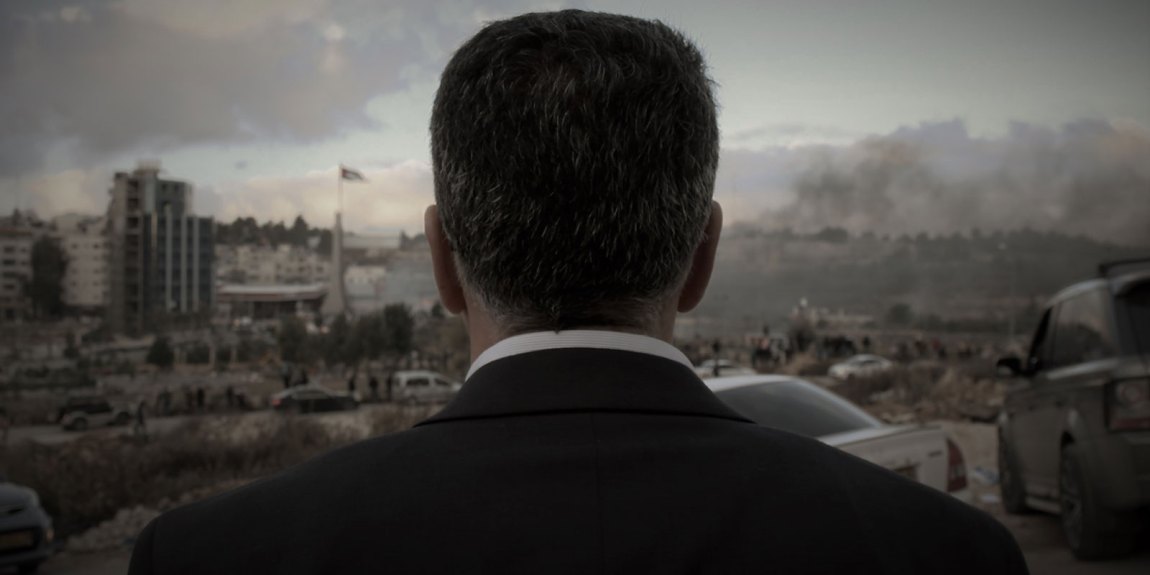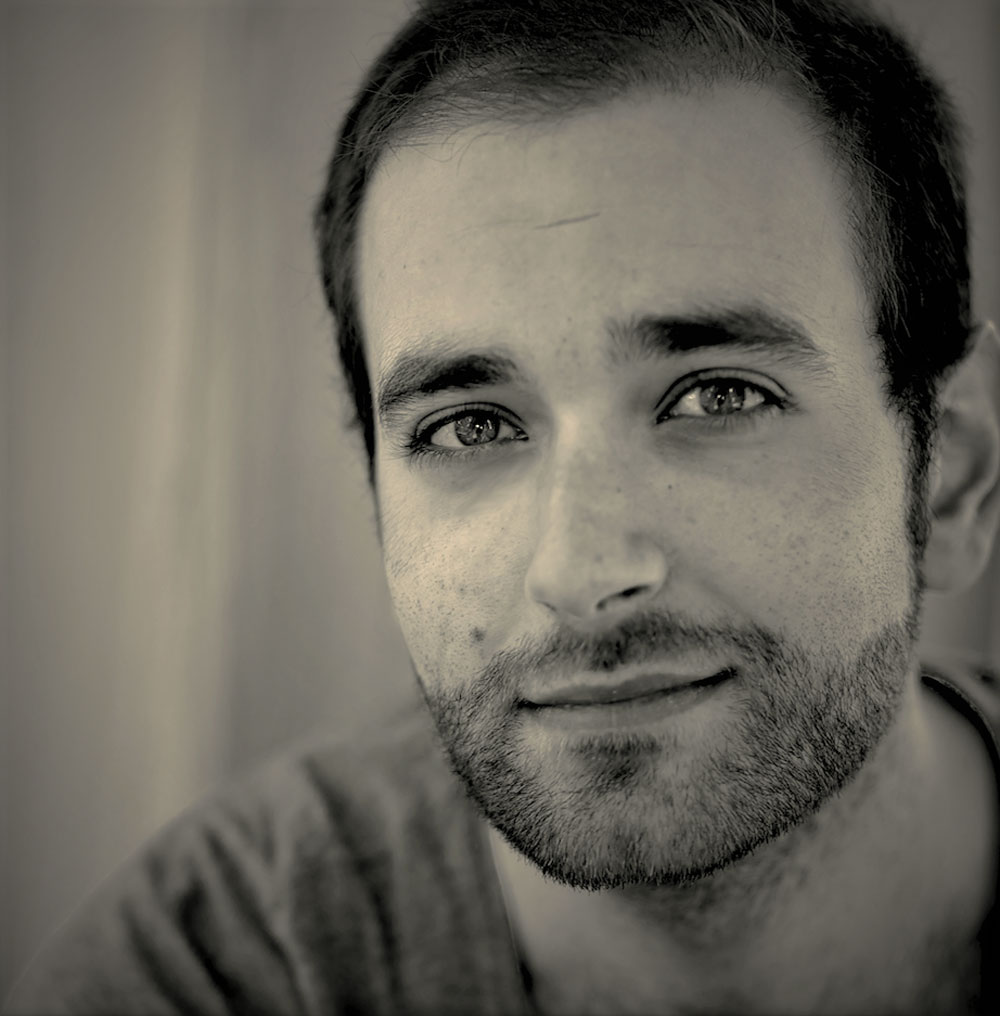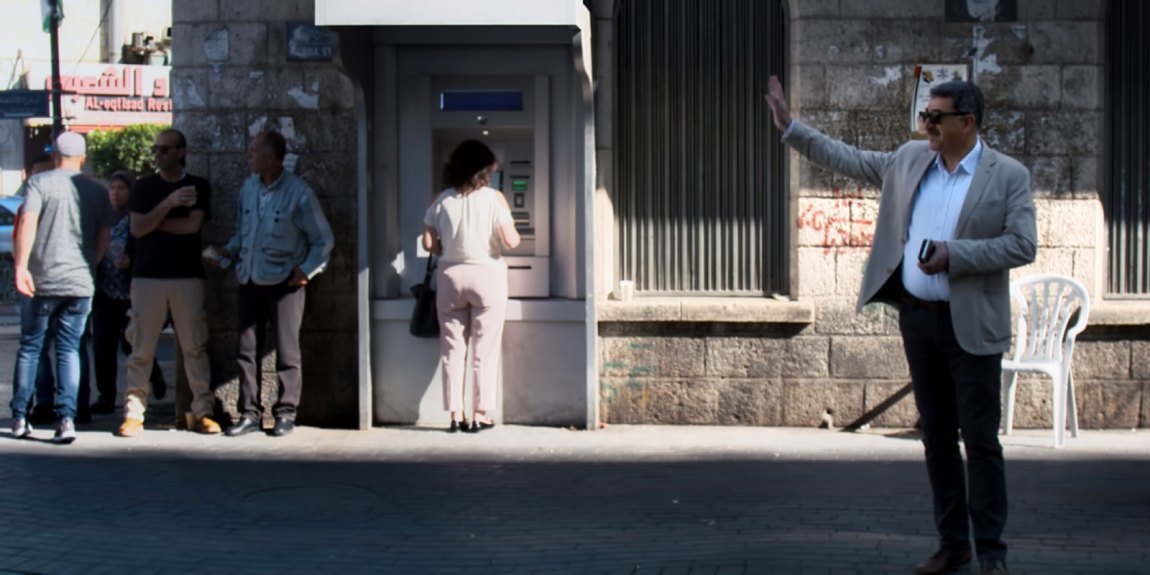There are obvious ways to show the Occupation of Palestine: shaky footage of Israeli soldiers firing at crowds, tanks cruising down Biblical-looking streets, and bird’s eye views of a concrete wall cleaving villages. And then there’s the perspective presented in the documentary Mayor.
Directed by David Osit, the film follows Musa Hadid, the mayor of Ramallah in the West Bank, whom we first meet drinking espresso alone in a café sheathed in red Christmas balls and lights. What follows is a narrative that, unlike most films made about this parcel of land, privileges the mundane over the salacious. We see cars honk and Hadid wave as he walks to work, we watch him tour a pink-painted school where he promises to fix wonky doors, debate the meaning of a space between two letters in the city’s ad slogan, and try to get a functioning sewage treatment plant built for his town.
And so, when some event does break through the banality—like President Trump declaring US recognition of Jerusalem as the capital of Israel, or Israeli soldiers surrounding the town hall during a tense standoff with street protesters—the grim realities of the occupation come sharply into focus, if in an atypical way.
“The film is not informed by this sort of Hollywood expectation that it be an action film,” Osit told me via Zoom from his home in Brooklyn. “I think that that is to the shame of so many documentaries that are made in this part of the world, in that they’re prioritizing scenes of violence or action as though that is the core of what is supposed to grab our attention.”
Osit spoke to me last week about a variety of topics—the mayor’s method of resisting the Occupation, the inertia on the US side to seek a solution, and what it’s like to make a film that asks audiences to imagine being the chief executive of a capital city without a country. What follows is an edited transcript of our conversation.
Marisa Mazria Katz: Instead of the typical trope of visualizing Palestine with a military checkpoint or separation wall, we feel the constraints on the Occupied Territories in scenes like the one where we see locals observe, from a rooftop, the ever-shrinking distance between their home and the ever-expanding Israeli settlements. Was it a conscious choice to sidestep those familiar visual cues in favor of moments like this?
David Osit: It’s a film that’s also about geography. It opens, literally, with a map. I do that almost ironically, but I think the cost of the Occupation, the moral cost of occupation, both on the practitioners and the people who suffer from it, is often explored through the lens of body count or death, or very visceral, obvious costs. I rarely see it portrayed in the much more mundane things—but more horrifying in their mundanity—like the fact that there is no national currency of Palestine, it’s the Israeli shekel. Find me the person who’s going to make the argument that Palestine is not occupied by Israel when they don’t have their own currency.
There are certain things that made it feel so much more inalienably obvious that there was a frustrating problem going on here—and, geography-wise, standing on a hilltop being able to see Jerusalem, being able to see Tel Aviv.
And also, in terms of geography, the Occupation is normally couched in sweeping geopolitical rhetoric, but this film really homes in on a neighborhood in Palestine. Was this deliberate?
The Occupation creates this dysmorphia between your relationship to your home and your own two-block radius. I’d never seen that portrayed in a film before. And what if I could show that the cost of the Occupation is also just about how you feel literally about the streets you live on? Whether they feel safe? Whether you feel comfortable going outside for dinner? Whether you feel as if you have ownership and the ability to create edifices of civic pride, which are so natural to the course of the work of a mayor, regardless of what city they’re in. That was compelling to me.
And with the geography of the settlements, I know what they look like. I know how the settlements are talked about in films. But what if I could show it through the eyes of people over in Ramallah, just on a rooftop, [showing] how close it is.
Throughout the film, we see the mayor working on a fountain that pulses to multicolored lights and music from a composer like Andrea Bocelli. Was the decision to have the fountain feature so prominently in the film a device to show the limits of the mayor’s power? Or something else?
Advertisement
There are all these expressions of civic pride in the film, especially toward the beginning, as you’re watching and trying to get your bearings as to precisely what this film’s going to be saying and what the meaning is. By the end of the film, when you come to realize the limits of Musa [Hadid]’s power and the circumstances of how the Occupation asserts itself, even over his small, dignified city, the fountain becomes a symbol of resistance.
The Middle East has been radically altered by the Trump administration’s Abraham Accords. In many ways, one can say it shifted the conversation around what Middle East peace even means. Does that affect the impact a film like this can have?
For the last several decades, there’s really been no chance for anything to change unless American consciousness changed on this issue. That was the case in South Africa in the 1990s, and I think that will be the case with Palestine in the twenty-first century, since the Second Intifada ended: it hasn’t happened; our consciousness isn’t changing. I think it’s because of this reason I made the film. There’s nothing compelling our consciousness to change.
It doesn’t matter historically which administration has been in the White House in the last twenty years or so. It all falls under a one-dimensional rubric that refuses to acknowledge there is any reason to mind what’s happening in Palestine. And with the Abraham Accords, ultimately, it’s just the further manifestation of our society trending toward capital: our human interest tends to track our monetary interest. It all matches up, unfortunately, in a world that prioritizes profit over people.
Your film never interacts with Israeli soldiers. At most, you show them far away or through mediated forms like the radio or TV. Was this intentional?
Absolutely. There’s nothing in the film that exists outside the Ramallah-ite’s experience of living in Ramallah. When you’re seeing these images [of soldiers], you’re either seeing them on TV—unless you’re at the clash [between soldiers and the Palestinians that Musa Hadid observes] for a brief moment—or you’re downtown eating dinner when the Occupation also shows up. You’re seeing it the way a Palestinian person sees it.
A lot of this film is in response to other films on this part of the world that I’ve seen—and had some issues with—where they always resort to the newscasts, the faraway vantage point, the alienation that arises from that, and the dissociation that comes from looking at an image not from a personal level. I’ve been asked why there aren’t Israeli characters in the film or why don’t I spend time with the IDF? The answer is: Palestinians don’t spend time with the IDF.
A central scene in the film is when the mayor and his team meet a group of German delegates who are trying to facilitate a dialogue between the Palestinians and Israelis. The interaction foregrounds the constant pressure on Palestinians to stop being such refuseniks and just make nice with Israelis. It also revealed how this dynamic constantly puts the Palestinians in a box of seeming intransigent and self-harmingly stubborn. Did you show this interaction to put this dehumanizing trope on full display?
It’s about this group of well-meaning, liberal people, which I think almost any audience member can relate to. You watch that conversation and you can see a little bit of reason in it, but you can also see the dehumanization of it. We don’t get that many opportunities to look critically at ourselves.
The Global South is constantly asked by the West to lift themselves up, and Palestine’s no exception. And this is a mayor, frankly, who plays the part. He wears a suit. He’s Christian. He’s charismatic. He speaks English. He’s beloved. He is everything that the West wants a mayor in Palestine to be—but we reject him, anyway. We reject his pleas, always with this notion that this will all be better if you just toe the line.
The fourth wall is broken in one scene where Musa Hadid is looking out at the city from his office, he turns to you directly and asks you if Americans care about what is happening there. You respond by saying you’re not sure. What compelled you to put that part in?
When that happened, I could feel myself becoming a character in the film for this brief moment. I felt I had to give an answer that would further Musa’s emotional exploration of what this all means—for an American not to care where here he is, and his work of trying to get Americans and Westerners to care about what’s going on.
Advertisement
That moment had to be in the film because, to me, it was an invitation for an audience to consider whether they knew about anything that happened in the first forty-five minutes of the story. When you’re as close to someone else’s perspective and point of view as you are in this film to Musa’s, I think the moments that remind you you’re watching real life are quite valuable.
The film spends so much time trying to show you humor and banality in this provocative way that this is a really raw, immediate invitation to think to yourself: How complicit am I in how little I know?





